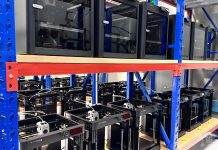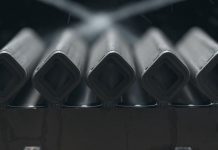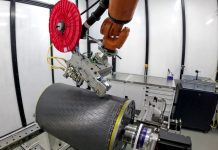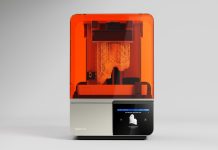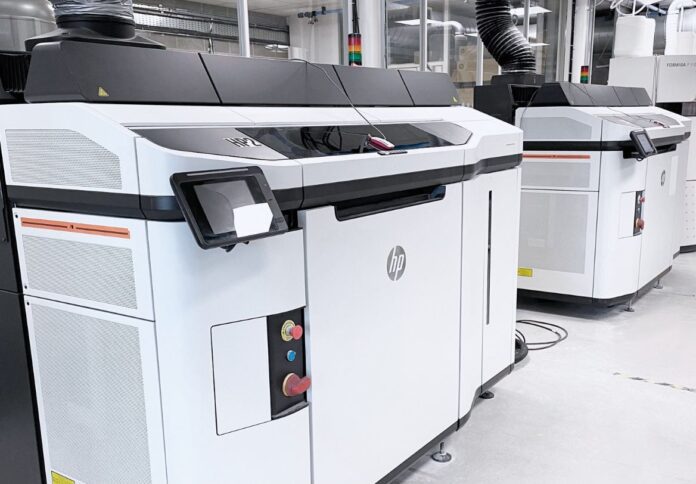
Article by Nick Allen, MD, 3DPRINTUK
Anyone remotely interested in marketing will have often heard about the so-called “so what” test. However grand the claim made about a new product or service, however hyperbolic the statements around it are if it doesn’t pass the customer “so what” test it will most likely fall flat, or at best not achieve hoped-for attention. A product or service must fulfil a need (or stimulate a hitherto unknown need) in customers, and answer the question “so what?” with nailed-down and demonstrable benefits.
Now let’s take a leap. As a company, 3DPRINTUK is embedded in the additive manufacturing (AM) / 3D printing world. We consider ourselves a mover and a shaker in the space, constantly investing in new technology, motivating successful customer outcomes through a combination of state-of-the-art systems and high levels of experience and expertise. As such, we can advise you on issues relating to technology and material choice, orientation of parts in a build area to maximise return, design for AM, etc… etc… We live and breathe 3D printing every day. Our customers see the value in using 3D printing as part of their business strategy, so we exist in a “convinced” world of 3D printing evangelists.
What we very rarely have to do is look at 3D printing from the perspective of someone not experienced in its use, unaware of the benefits it can bestow on a product development and product manufacturing project. In essence, what would we say if someone came up to us and said “3D printing — So What?”
DID YOU SAY “SO WHAT”? REALLY?
3D printing, additive manufacturing, (and for those long enough in the tooth) rapid prototyping has been around in one form or another for 30 plus years. Its ability to in some way or another be disruptive for such a long time is reflected in the terminology used to describe it. For the first 20 years, it disrupted in the area of prototyping (hence rapid prototyping). More recently it has disrupted — and as the technologies evolve, continues to disrupt — in the area of production (hence additive manufacturing).
Somewhere along the line, today’s manufacturers will have some knowledge of or experience of using 3D printing as a prototyping or production tool. But it is often the case that without a long association with the technology, the full benefit of 3D printing can be missed.
3DPRINTING FOR PROTOTYPING
In the prototyping arena, the key is the ability to hold in your hand a few hours after pushing “the button” a 3D, almost exact replica of the 3D CAD design you have on screen. 3D printing software has the ability to slice the data in the 3D CAD model, and these are the layers that print. Such early (or should we say rapid) prototypes allow early verification of design intent, can be looked at before the product development process begins in earnest by tooling managers for example so that issues that could delay product development are identified early in the process.
In essence, rapid prototyping allows for concurrent engineering, all members of a product development team being able to work together and influence design outcomes early in the product development process. It replaces sequential or “over the wall” engineering, thereby compressing time-to-market, and facilitating the development of products that are right first time, speedily, and cost effectively.
3D PRINTING FOR PRODUCTION
The inherent advantages of 3D printing for production are pretty well known today, and the technology is in a position where it can now rival traditional manufacturing processes in terms of costs and lead times in a variety or industry applications. But it is not all about cost and time savings.
While in a growing number of cases manufacturers can justify the move to 3D printing by showing clear economic advantages, it is the added-value advantages that are in some instances just as — if not more — important.
Industry in general is driven by the need to innovate to satisfy customer demand. As such, a technology that can stimulate innovation, break down the barriers that are restraining design engineers as the grapple with just what traditional manufacturing processes can achieve is extremely important. And it is here that 3D printing is providing a hugely attractive alternative, as it is able to manufacture part complexity and geometric complexity either impossible of massively uneconomic via conventional plastic and metal manufacturing technologies.
In addition, complex parts that via traditional manufacturing processes would need to be assembled for end-use applications can be produced in one via 3D printing, reducing the need for expensive and time-consuming multiple tools, and also the cost and time of post-production assembly.
Of increasing importance today in light of the COVID-19 pandemic is the fact that 3D printing can negate the need for international and increasingly fragile supply chains. 3D printing allows manufacturers to produce locally to the markets that they serve, and it also democratises manufacturing as it overcomes the infrastructural and capital equipment led restrictions on the ability to manufacture.
3D printing is also a technology that does not require tooling and is not encumbered by the cost and time issues related to tooling. This not only means that manufacturing can begin the day that the design is signed off, but also allows for simple and cost-effective design changes and also opens up the possibility of real mass customisation.
THE BARRIERS
So far so good then. There are a host of positive reasons why 3D printing should be considered and used as an alternative to traditional manufacturing processes. So why is it the case that relatively few manufacturers have made the move? Why is it that not every manufacturing facility across the world has 3D printers working 24/7, 365 days a year.
Well, while there are obvious benefits, there are also obvious barriers to adoption, some real, some perceived.
One thing that really has to be put top of the list is just the obvious inertia that exists when moving from tried and tested manufacturing technologies to new alternatives. An “if its not broken why try to fix it” mentality exists, and in addition, when a manufacturing facility is set up and has been set up in a certain way for decades, the resistance to knocking this down and rebuilding is obvious. This is why so much time and effort is spent by 3D printing platform developers educating their potential customer base as to the easy wins and benefits through the use of 3D printing machines.
A step on from this is the fact that 3D printing is seen as so different in its conception, and the perception is that it requires a huge learning curve to use, and adoption is slowed as companies perceive there to be a knowledge gap that will be difficulty to bridge.
For sure, in addition, companies are put off by the often extremely high cost of top-end 3D printing machines. For many, upgrading and repairing existing traditional manufacturing infrastructure is still seen as preferable to expending multiple hundreds and thousands of dollars on a technology that they do not feel comfortable with.
Material issues are also often cited, with the general view being that the palette of plastic and metal material available on 3D printing machines is very narrow. Today, this is perhaps not a real objection, as material development is one of the key areas of activity in the 3D printing sector. The key drawback here is that often specific technologies need to be used with specific materials, so to benefit from the range available, investment in multiple 3D printing solutions would be necessary, adding to the necessary capital expenditure for in-house use.
OVERCOMING BARRIERS
The obvious route to adoption that overcomes a number of these objections and barriers to uptake is to use the agency of a 3D printing bureau. In so doing, it is possible to use 3D printing without the need to invest in the kit, with little necessary understanding of how the technology works (just a basic understanding of how to design for the process), and leaning on the knowledge base of your chosen supplier.
So there we are, job done. How to embrace 3D printing to maximize the business opportunities while minimizing the risk.
One thing unites the entire manufacturing world, and that is the drive to produce innovative, attractive, useful products in a timely and cost-effective manner. The fact that 3D printing can assist in these endeavours is a given, but the way that its use is stimulated and curated is important to ensure success in adoption. 3DPRINTUK exists to service the needs of modern manufacturers and accelerate the adoption of this technology that by disrupting the traditional manufacturing paradigm produces, innovative and accurate parts cost-effectively and in an agile and timely fashion.


